Central Iowa’s Vibrant Hot Air Balloon Community
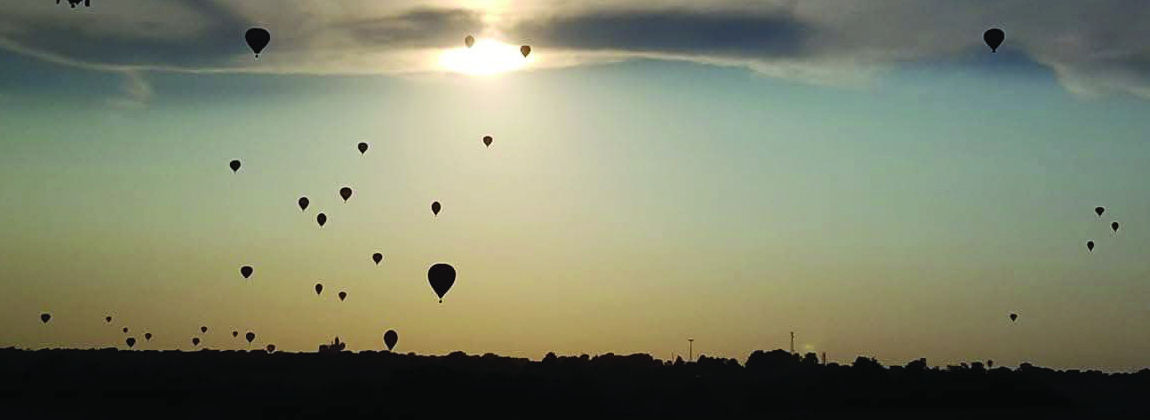
Central Iowa has a vibrant hot air balloon community. It’s nationally recognized as an area in the United States with a high concentration of top-tier hot air balloon pilots. About 50 hot air balloon pilots are in the Greater Des Moines (DSM) area alone.
I have never been a pilot, but I have been part of the Central Iowa hot air balloon community since 1997. I grew up in a town near Indianola and often saw hot air balloons in the distance. But it wasn’t until I got involved in the hot air balloon community that I understood everything that went into lifting that distant balloon into the sky.
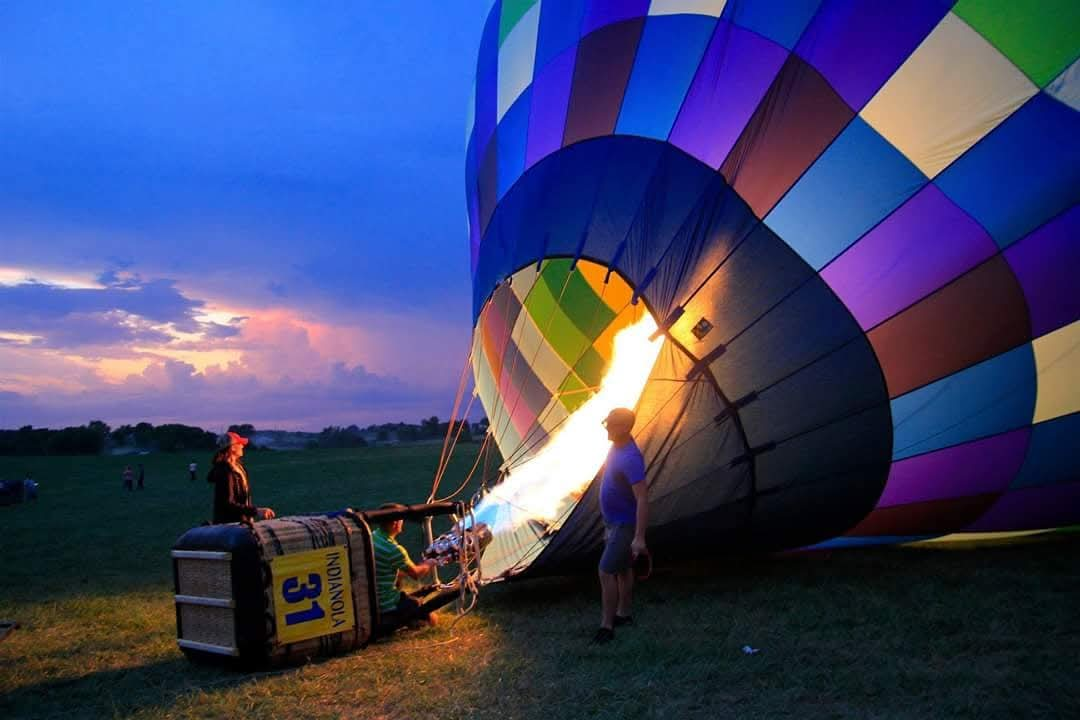
In Flight
The balloon in the distance is piloted by a Federal Aviation Administration (FAA) licensed hot air balloon pilot. Equipment aside, that pilot has logged hours of flight time and taken many written exams to be in the air. That pilot also has a crew of people following them through the countryside in a chase vehicle. The crew is typically family and/or friends that are dedicated to the sport and the pilot’s love of flying.
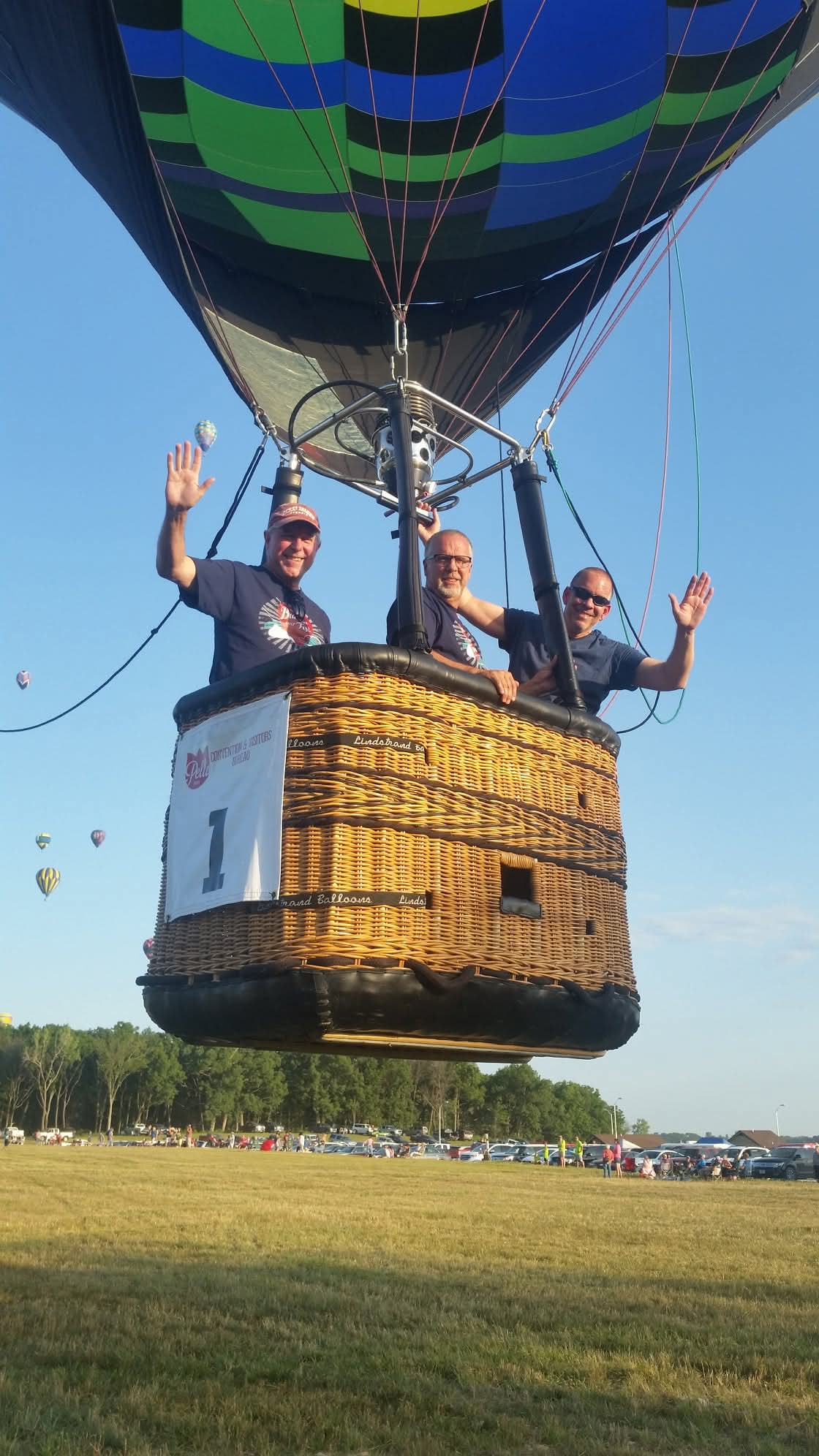
The pilot monitors and notes many things in the air — their wind and altitude directions, fuel consumption, air temperature inside the balloon and passengers in the basket. If they’re flying near other balloons, they need to monitor where they are located in the air compared to others. Like with cars on the road, there are rules; the lower balloon has the right of way.
Balloons do not have brakes or steering wheels. The pilot only controls the up and down motions. They use the burner and parachute line to steer the balloon and control the speed of the ascent or descent. Different altitudes have different wind directions and speeds. The pilot knows which direction they want to go before they launch and they’ll steer the balloon using different altitudes to get there. If you’ve ever driven a boat or jet ski, you have an idea of what steering a balloon is like. Reaction is not immediate, and once a direction is started it’s not possible to immediately change it.
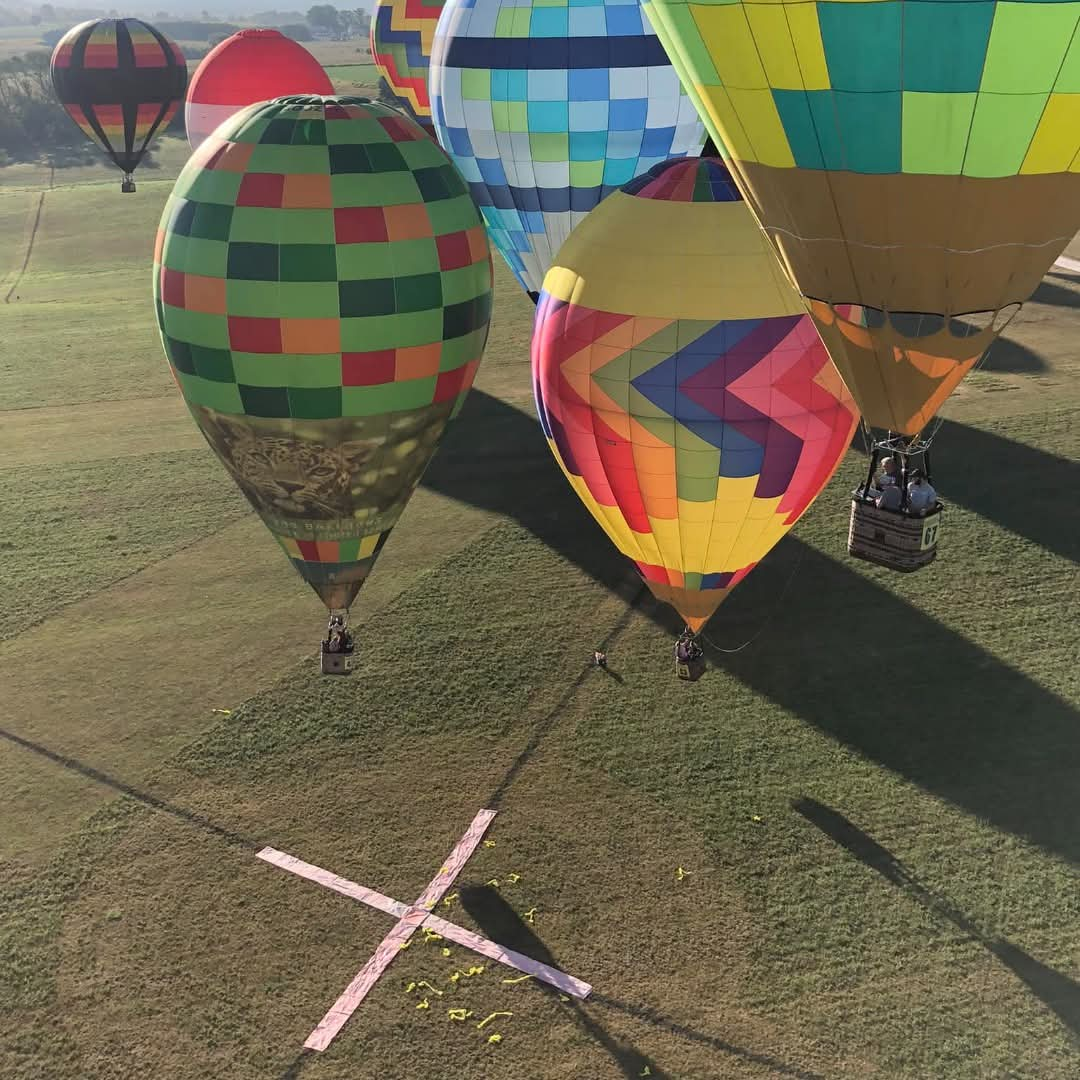
Area landowners also play an important role in each flight. The pilot and crew knock on doors of houses they may or may not know to request permission to use property to launch and land.
Equipment
The pilot typically owns the balloon and equipment. They are responsible for maintenance and insurance. Yep, hot air balloon insurance exists. The balloon, also called the envelope, basket, fuel tanks and burners are inspected annually. A failed inspection means either repairs or the equipment is deemed unairworthy and no longer usable.
Like cars, pilots can buy new, used or build their own. The cost of the system (the balloon, basket, fuel tanks and burners) varies depending on the hours on the system. Hours is one of the ways to judge the life left in the system. A good, used system can usually cost $6,000 to $10,000. But that doesn’t include all the equipment. That is just the flying portion. Other items needed include inflator fans and a chase vehicle to haul equipment and crew. And don’t forget propane for each flight.
Balloon Races
Flying a balloon can be a business or a hobby, and there are competitive and non-competitive pilots. Most pilots and crews attend hot air balloon events that involve competition and give them a way to share their love of the sport with the community. Competitive events offer pilots opportunities to earn points toward national standings and/or bragging rights for placing. Typically, prize money and a trophy or medal are awarded at each event.
Most events are called balloon races; however, racing doesn’t have a lot to do with it. It’s not about speed; it’s about accuracy of flying to a specific target and dropping a marker within a specific space to achieve the best measurement score. The pilot that consistently achieves the best measured score over the course of multiple targets on multiple days wins. To give you an idea of how difficult it is to score, imagine driving a boat or jet ski and trying to place a ring over a pole in the water as you drive by without stopping.
I have run a crew, ridden in a balloon and scored competitions during my time in hot air ballooning. While I enjoy all aspects, nothing beats standing at a target and watching the balloons fly in and try to achieve the best score they can. I get to cheer for them when they do great and share in their frustration when things don’t go as planned.
Get Involved or Attend a Flight
If you would like to experience the hot air balloon culture too, you can attend an event to watch or volunteer as a flight crew member to score an event or lend a hand to help put on the show. Just visit the website of the event near you to find the contact information.
- This free event takes place at North Overlook Beach near Red Rock Dam in Pella, Iowa.
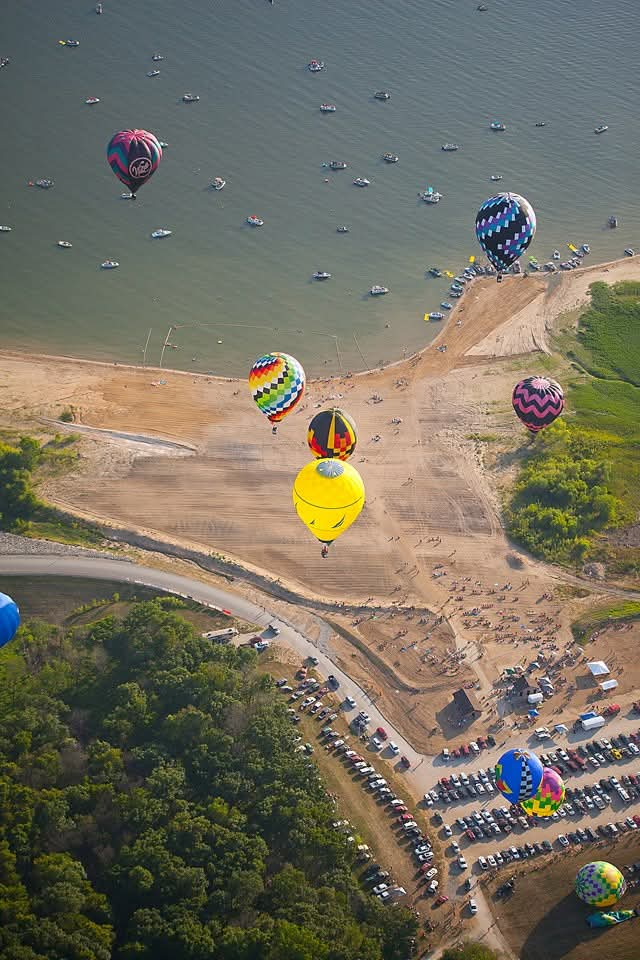
- Ticket information is on the website. This event takes place at the Memorial Balloon Field in Indianola, Iowa.

Annual AM Flight over Des Moines | July 14, 2025, first attempt
- If the weather does not allow, then attempts will continue until an AM flight takes place. Location varies but look to the skies in the Des Moines area around your morning commute. Common flight times are around 7-8 a.m. This annual flight’s first attempt commonly takes place the Monday of the week before the National Balloon Classic.
Kristine Darland
Kristine Darland grew up in Carlisle, Iowa. She is currently a fellow with the 2025 cohort of the DSM Fellowship Program. She attended Simpson College and is a Stakeholder Channel Analyst at Wellmark Blue Cross Blue Shield. She has been a scoring official for hot air balloon events for 15+ years.